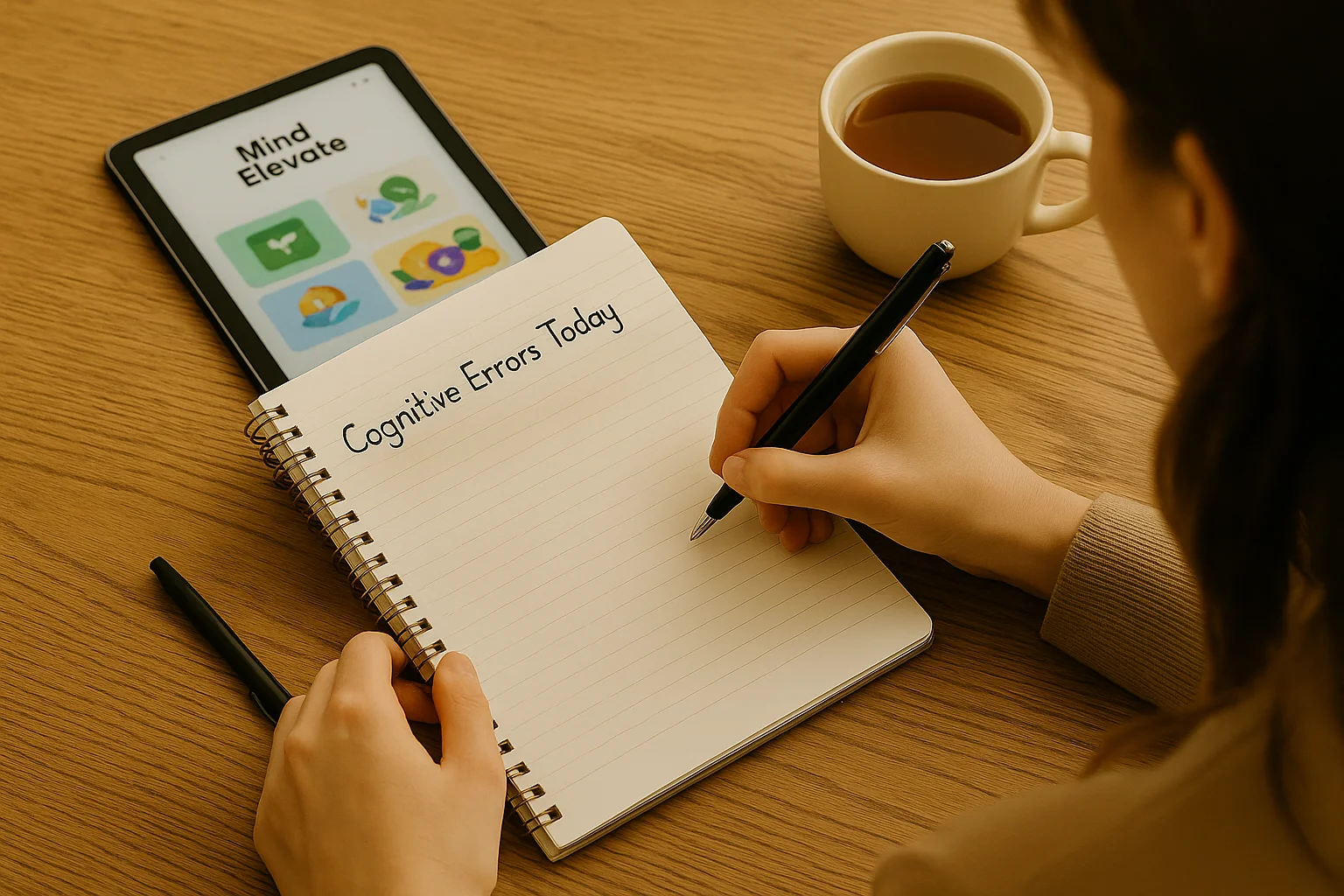The Brain’s Blind Spots: How to Detect and Train Around Them
.Your brain, brilliant as it is, is not a flawless machine: it cuts corners, edits, and cheats. Why? Well, do you know that thousands of stimuli compete for your attention every minute, so your mind takes mental shortcuts — efficient, but often misleading. These cognitive shortcuts are your blind spots. And, unfortunately, they are not harmless.
Cognitive shortcuts influence how you solve problems, what you remember, and every decision you make, e.g., even choosing a partner or evaluating a business idea. Some mistakes are trivial. Others cost money, relationships, or opportunity. That’s where true brain workout begins.
Well, a real brain workout means sharpening your memory or improving math skills along with challenging your blind spots, retraining your mental reflexes, and letting you resist the easy (and often wrong) answer. So, let us look right now at where those blind spots live — and how you can spot them before they mislead you.
What Are Brain Blind Spots — And Why We All Have Them
Imagine your brain as a super-efficient secretary. Its job is to handle a ridiculous amount of incoming information and still get stuff done. So, like any smart assistant, it filters, shortcuts, and fills in the blanks. Sometimes that’s helpful. Often, it’s not.
Common signs of blind spots:
You miss typos in your own writing — because you “see” what you meant to write.
A charismatic speaker sways you — simply because they confirm what you already believe.
You walk into a room and forget why you came in — your brain pruned the “irrelevant” data.
Well, actually even some studies show your brain discards around 90% of incoming sensory input. What you perceive is more reconstruction than reality.
Tip: Don’t beat yourself up for these gaps. The goal isn’t to erase them — it is to notice when they are active.
Visual Traps: When Your Eyes Deceive You
It is a mistake to believe you “see the world as it is”. Your brain is constantly tweaking your visual input, and sometimes, those tweaks become full-blown illusions.
Famous examples:
Ebbinghaus illusion: Two identical circles appear different in size depending on surrounding shapes.
The Dress: Was it blue and black or white and gold? The internet argued for years — and both sides felt right.
These aren’t just party tricks. They show how perception is context-driven and how confidently wrong your brain can be.
How to train your visual awareness:
Search for classic optical illusions and try to explain why they work. Don’t just marvel but try to dissect.
Start a “perception log”: every time something looked or felt different from reality (a misread label, a misheard phrase), write it down. You'll notice patterns in your own filters.

Logic Gaps: When You’re Sure, but Wrong
Blind spots don’t stop with your senses — they sneak into your thinking (especially under pressure). These are mental errors that make your reasoning feel solid… when it is actually full of holes. Let’s look at two common ones — with real-world examples:
Confirmation Bias
Imagine you believe eating late causes weight gain. You see an article supporting that view and bookmark it. You ignore the two studies showing no link. You feel confident — but you’ve filtered the evidence.
Availability Bias
You hear two news stories in one week about airplane turbulence. Suddenly, flying feels dangerous. Logically, you know air travel is safer than driving — but the ease of recall distorts the risk.
Train your logic like a detective:
Ask, “What would contradict this idea?” and then seek out disconfirming evidence.
When evaluating someone’s argument, break it into: fact (What is said?); conclusion (What does it imply?); alternative (What else could be true?)
Emotional Distortions: When Feelings Hijack the Facts
Your brain doesn’t always separate emotion from logic — and that is a feature, not a bug. Emotions evolved to help us survive, but in modern life, they often cloud judgment instead of clarifying it.
Real-World Examples
Catastrophizing: You get a critical email and immediately imagine being fired. That is not analysis — that is your fear playing a guessing game.
Projection: You are annoyed with a friend but assume they are the one being distant. Your mood shapes your interpretation, even without evidence.
These distortions happen so fast that we rarely notice them. But they affect many things: how we judge people, make decisions, and respond to stress. So, are there any ways to help yourself? Sure, just pause for a self-check. For example, before reacting, you can ask yourself: “What am I feeling right now — and is this emotion steering my decision?”
Another simple trick is to jot down your thoughts and emotions. Seeing them on paper helps you spot exaggerated fears or misplaced blame. The act of writing slows down the emotion and gives space for logic.
The Confidence Trap: Why Feeling Sure Doesn’t Mean Being Right
Here is a twist: the more confident you feel, the more likely you are to be wrong — especially in new or complex situations. This is known as the Dunning–Kruger effect.
Let us imagine: a beginner investor reads a few articles and feels ready to outsmart the market. But that confidence comes from not knowing what they don’t know. Meanwhile, experienced professionals often express more caution — not because they are unsure, but because they are aware of complexity.
How to Stay Grounded:
Thought to Check | What to Ask |
“I’m sure I’m right” | “What evidence do I have for this?” |
“That’s definitely true” | “Could there be a different perspective?” |
“I already know this” | “Do I understand it well enough to explain it simply?” |
Well, remember: confidence should follow knowledge — not replace it.
How to Train Yourself to See Blind Spots
Recognizing mental blind spots isn’t about becoming perfect, just about developing the habit of noticing.
So, try the following techniques to build awareness:
Cognitive error journal: At the end of the day, write down one moment when your thinking may have been biased — and why.
The pause before reaction: Whether it’s a social media post or a heated discussion, wait five seconds before responding. This gives your brain time to shift out of autopilot.
Switch perspectives: Ask: “How would someone I disagree with see this?” Even pretending to argue the opposite side can reveal your own blind spots.
Quick Tip: Want to sharpen these skills with short, practical exercises? Try Mind Elevate app for training your brain. Games like Planetary Scout help you train observational awareness, while Terraforming challenges your logical flexibility — both key tools in catching cognitive distortions early.

Don’t Fight Your Brain — Train It to See More
Here’s the truth most people miss: brain blind spots are not a glitch in the system — they’re part of how the system works. Your brain filters, edits, simplifies, and fills in blanks not because it's lazy, but because it's efficient. That’s how we survive the flood of input we face daily.
But here is the good news — awareness changes everything.
You don’t need to eliminate blind spots (you can’t). You just need to learn to notice them. That shift — from unconscious reaction to mindful observation — is where real brain training begins.
One simple daily habit:
Once a day, pause and ask: “Could I be wrong — and how would I know?” This question alone can break the illusion of certainty and push your brain into thoughtful mode. And don’t panic, the task is not about doubting everything — it’s about being open to checking your thinking.
Mini Checklist: Use This to Stay Sharp
Question | When to Ask | Why It Helps |
What might I have missed? | During analysis | Broadens attention |
Is there another perspective? | In disagreements | Reduces bias and tunnel vision |
Is this a fact or interpretation? | When emotions flare up | Separates reaction from reasoning |
What would my logical self say? | Before making a decision | Activates slow, rational thinking |
Keep this table handy. Print it, stick it on your desk and use it when your brain feels “sure” too fast.
No Superpowers Needed
You don’t need a perfect memory or Einstein-level IQ to make smarter choices. What you need is curiosity about your own thinking. If you can pause for a second and ask a better question, you're already way ahead of your autopilot self.
And that’s the real goal of any brain workout — not just sharper logic or better recall, but the ability to step back and see your mind in action. Once you do, those blind spots don’t disappear — but they stop driving the car, but you do.








